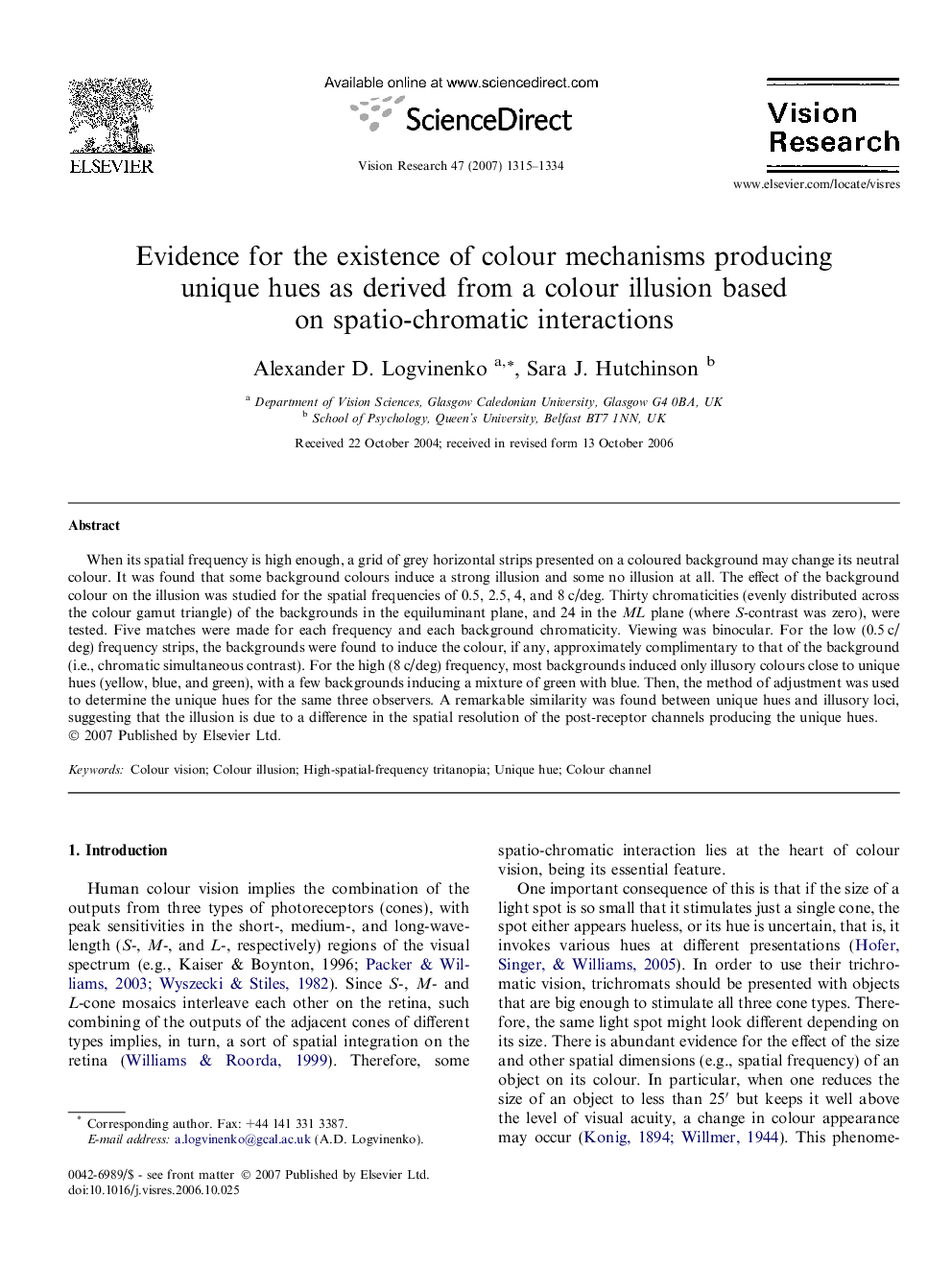| Article ID | Journal | Published Year | Pages | File Type |
|---|---|---|---|---|
| 4036323 | Vision Research | 2007 | 20 Pages |
When its spatial frequency is high enough, a grid of grey horizontal strips presented on a coloured background may change its neutral colour. It was found that some background colours induce a strong illusion and some no illusion at all. The effect of the background colour on the illusion was studied for the spatial frequencies of 0.5, 2.5, 4, and 8 c/deg. Thirty chromaticities (evenly distributed across the colour gamut triangle) of the backgrounds in the equiluminant plane, and 24 in the ML plane (where S-contrast was zero), were tested. Five matches were made for each frequency and each background chromaticity. Viewing was binocular. For the low (0.5 c/deg) frequency strips, the backgrounds were found to induce the colour, if any, approximately complimentary to that of the background (i.e., chromatic simultaneous contrast). For the high (8 c/deg) frequency, most backgrounds induced only illusory colours close to unique hues (yellow, blue, and green), with a few backgrounds inducing a mixture of green with blue. Then, the method of adjustment was used to determine the unique hues for the same three observers. A remarkable similarity was found between unique hues and illusory loci, suggesting that the illusion is due to a difference in the spatial resolution of the post-receptor channels producing the unique hues.
